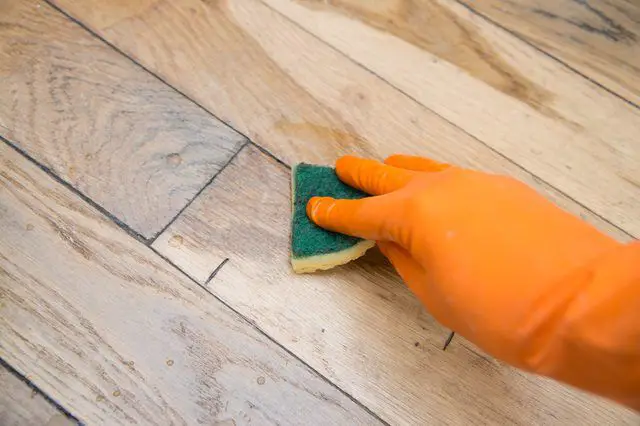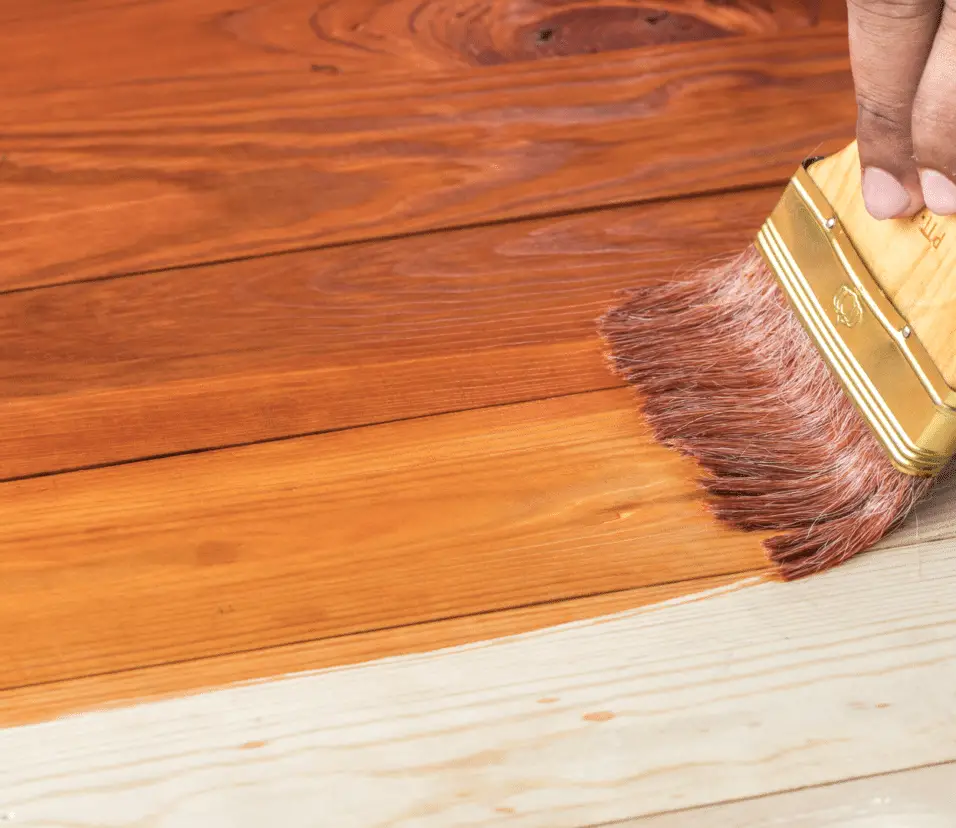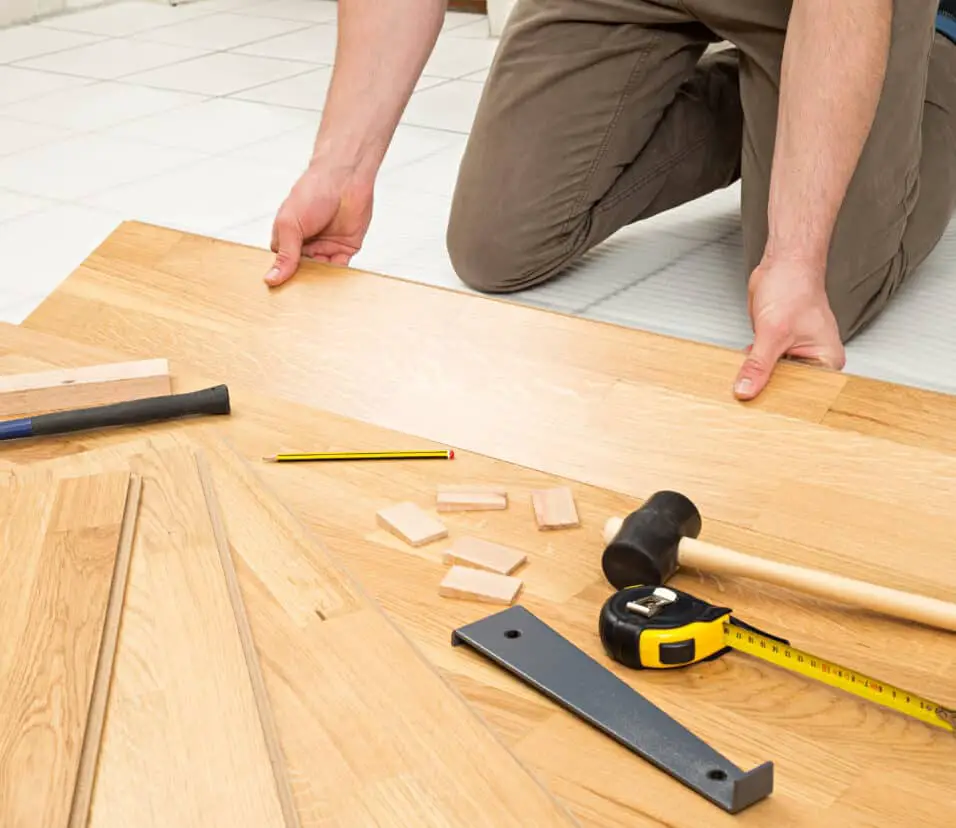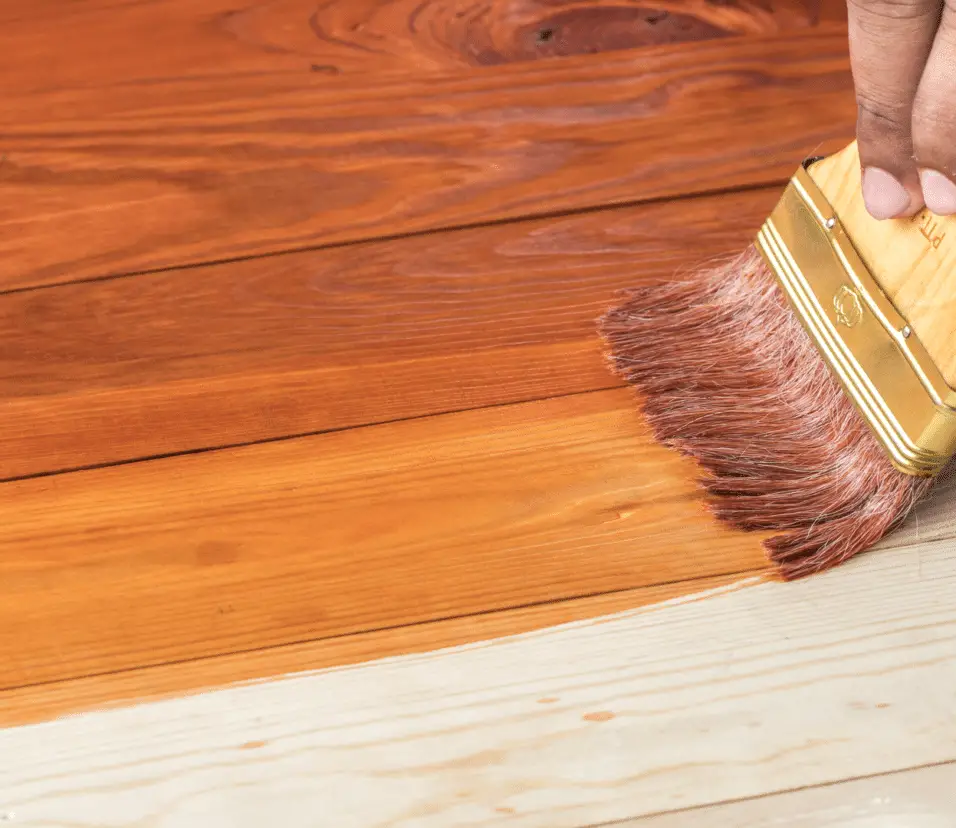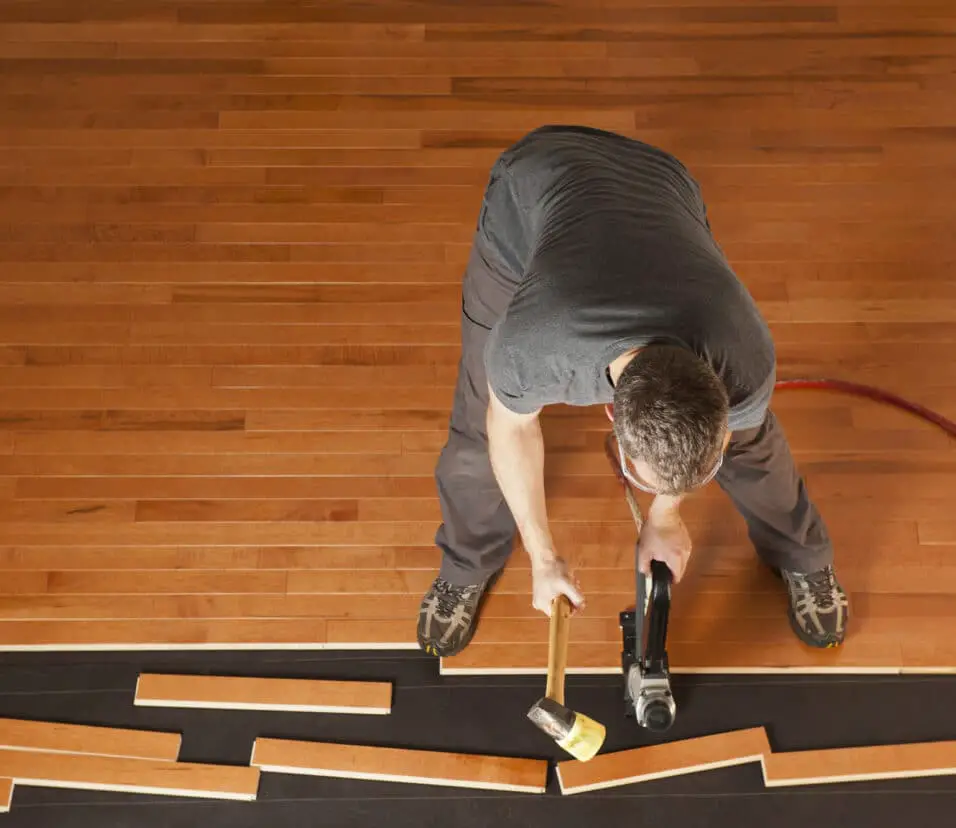How To Remove Wax From Wood Floor
Introduction
How To Remove Wax From Wood Floor: Keeping wood floors in pristine condition enhances the beauty and longevity of any living space. However, despite regular cleaning and maintenance, accidents can happen, leading to the unintended presence of wax on the wood surface. Whether from using wax-based cleaning products or accidental spills, removing wax from wood floors requires a careful approach to avoid damaging the delicate surface while achieving effective results. This guide provides a comprehensive overview of the best methods and techniques for safely and efficiently removing wax from wood floors, ensuring that your floors remain lustrous and well-maintained.
One of the most crucial aspects of wax removal from wood floors is understanding the proper technique to avoid causing harm to the wood’s natural finish. While scraping off the wax might seem like a straightforward solution, it poses the risk of damaging the wood surface and leaving unsightly marks. Instead, utilizing the power of heat can be a safer and more effective alternative. By softening the wax with heat, it becomes easier to lift and absorb, ultimately preserving the integrity of the wood floor.
While the use of heat is essential, it is equally vital to employ the right tools for the task. While a regular hairdryer may not provide even heating and could pose safety risks, a heat gun or an iron set to a low temperature is more suitable for the job. The method of application is also crucial, and it is essential to apply the heat evenly over the affected area to prevent any potential damage.
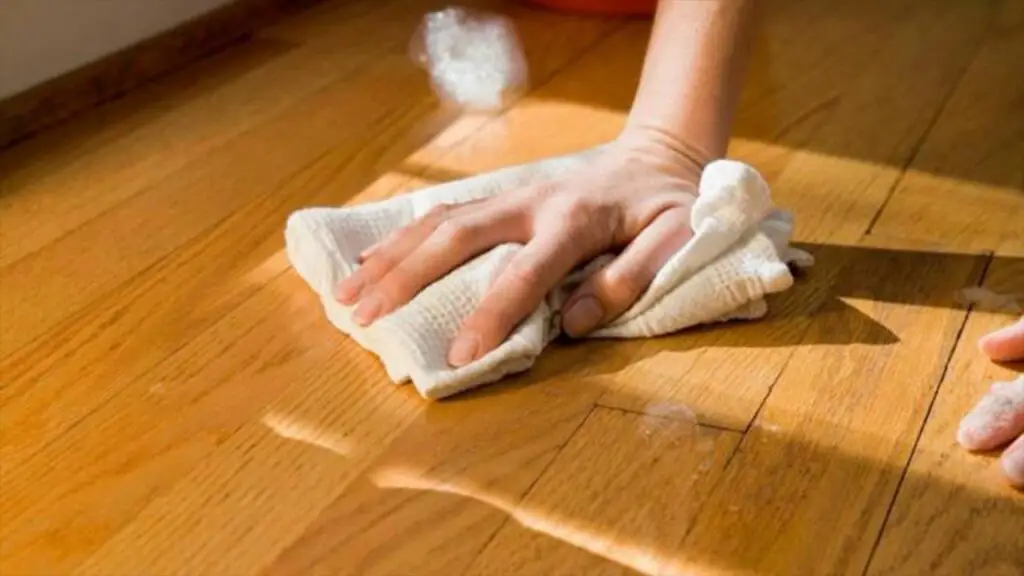
How do you remove wax from floors?
Mop the floor with clean water thoroughly that eradicates all the stickiness from it. Take a 2-gallon bucket filled with warm water and add ½ cup ammonia to it. Now, again mop the whole floor with this ammonia and hot water mixture. Usually, ammonia is strong enough to strip the wax from the floors.
Removing wax from floors requires a careful and methodical approach to achieve the best results without causing damage to the surface. Whether dealing with hardwood, tile, or linoleum floors, the following step-by-step process provides a reliable and effective method to get rid of unwanted wax buildup.
Preparation: Before starting the wax removal process, clear the floor of any furniture, rugs, or obstacles. This ensures unrestricted access to the entire affected area and prevents accidentally spreading wax to other surfaces during the cleaning process.
Scraping off Excess Wax: Using a plastic scraper or a credit card, gently scrape off as much excess wax as possible from the floor. Avoid using sharp or metal tools, as they can scratch or damage the surface.
Applying Heat: The next step involves softening the remaining wax to make it easier to remove. Use a heat gun, a low-temperature setting on an iron, or a blow dryer set to medium heat. Aim the heat at the waxed area, and keep the tool moving to prevent overheating or scorching the floor.
Absorption: While the wax is still warm, quickly blot it up with paper towels, clean white cloths, or an absorbent cloth diaper. Press the cloth onto the wax, allowing it to soak up the melted wax. Repeat this process until no more wax transfers to the cloth.
Cleaning Solution: Once you’ve removed as much wax as possible, prepare a cleaning solution appropriate for your type of flooring. For hardwood floors, use a mixture of mild dish soap and warm water. For tile or linoleum, a floor cleaner designed for those surfaces works well.
Mopping the Floor: Dip a soft mop into the cleaning solution, wring it out well, and mop the entire floor. This will help eliminate any remaining wax residue and leave the floor looking clean and refreshed.
Rinse and Dry: After mopping, rinse the floor with clean water to remove any traces of the cleaning solution. Dry the floor thoroughly with a clean, dry mop or towel.
Inspect and Repeat (if necessary): Once the floor is dry, inspect it under good lighting to ensure all wax has been removed. If you notice any lingering wax, repeat the heat and absorption process or consider using a commercial wax remover for stubborn spots.
By following these step-by-step instructions, you can effectively and safely remove wax from floors, restoring the floor’s natural beauty and maintaining a clean and welcoming living space.
What is the best wood wax remover?
Remove furniture wax with turpentine
Turpentine is a solvent and can be used as a wax dissolver. Apply some turpentine to a cloth and rub the surface clean.
When it comes to removing wax from wood surfaces, using the right wood wax remover is crucial for achieving effective results without causing damage to the wood. There are several options available in the market, each with its unique properties and suitability for different types of wood and wax buildup. Among the best wood wax removers are solvent-based removers and citrus-based removers.
Solvent-Based Wood Wax Removers
Solvent-based removers are effective in dissolving and breaking down stubborn wax buildup on wood floors. They often contain strong chemicals like mineral spirits or naphtha that can cut through layers of wax. These removers are particularly useful for heavily waxed or neglected floors. However, it’s essential to use them with caution, as prolonged exposure or improper application may damage the wood finish. Always follow the manufacturer’s instructions and perform a patch test in an inconspicuous area before using them on the entire floor.
Citrus-Based Wood Wax Removers
Citrus-based removers are a more environmentally friendly and less harsh alternative to solvent-based products. They are made from natural ingredients like d-limonene, derived from citrus fruits. Despite being gentler, citrus-based removers can still effectively dissolve and lift wax from wood surfaces. They are generally safer to use, emit less noxious fumes, and are biodegradable. Citrus-based removers are suitable for regular maintenance or when dealing with moderate wax buildup.
Commercial Wax Remover Products
There are also specialized commercial wax remover products available in the market, designed specifically for wood floors. These products are formulated to target wax and other floor finishes without harming the wood’s surface. They often come with detailed instructions and are a reliable choice for those seeking a no-fuss solution.
Homemade Remedies
In some cases, homemade remedies using household items like white vinegar and baking soda can be effective in removing minor wax residue. However, they might not be as potent as commercial or specialized wood wax removers, and their efficacy can vary depending on the type and age of the wax.
Ultimately, the best wood wax remover depends on the specific situation and the type of wood floor you have. Before making a choice, consider the level of wax buildup, the type of wood, and your comfort with using different types of products. It’s always advisable to test any wood wax remover in a small, inconspicuous area first to ensure compatibility and to achieve the best possible outcome without compromising the wood’s integrity.
What product removes wax from wood?
Remove furniture wax with turpentine
Turpentine is a solvent and can be used as a wax dissolver. Apply some turpentine to a cloth and rub the surface clean.
One of the most effective products for removing wax from wood surfaces is a specialized wood wax remover. These products are specifically formulated to break down and dissolve wax buildup without causing harm to the underlying wood. They come in various formulations, each with its unique ingredients and features, making them the go-to choice for safely and efficiently tackling wax-related issues on wood floors, furniture, and other wooden surfaces.
Wood wax removers typically contain powerful solvents, such as mineral spirits or naphtha, which work to dissolve the wax layer effectively. These solvents penetrate the wax, breaking it down and making it easier to remove without damaging the wood’s finish or leaving residue behind. Some wood wax removers also contain additional cleaning agents, allowing them to tackle other common stains and grime that might have accumulated on the wood.
One of the advantages of using a dedicated wood wax remover is its reliability and convenience. These products are specifically designed for the task at hand, ensuring that they deliver optimal results without unnecessary guesswork. Additionally, many wood wax removers come with clear instructions on how to use them properly, which is especially helpful for those who are not experienced in wax removal.
What is the easiest way to remove hard wax?
Soak a clean washcloth in hot water, and place it on the wax or wax residue to soften the wax. Let it sit in the area for around 1-2 minutes. Once wax is loosened, remove it with your washcloth. Mineral oil can also be used to remove small areas of wax or wax residue from the body.
The easiest way to remove hard wax depends on the surface it is adhered to. Whether dealing with hard wax on a floor, furniture, or another object, the following method offers a straightforward and effective approach to tackle the task.
Softening the Hard Wax: The first step is to soften the hard wax, making it easier to remove. To achieve this, use a heat source like a hairdryer, a heat gun, or an iron set to a low temperature. Hold the heat source a few inches away from the wax and move it back and forth to ensure even heating. Be cautious not to overheat the surface, especially if it’s wood or delicate material.
Blotting with Paper Towels or Cloth: While the wax is still warm and soft, quickly blot it with paper towels or clean white cloths. Press the paper towels or cloth onto the wax, allowing them to absorb the melted wax. Continue blotting until no more wax transfers to the cloth.
Removing Residue with a Plastic Scraper: After absorbing the bulk of the melted wax, gently scrape off any remaining residue using a plastic scraper. Be careful not to scratch or damage the surface during this process.
Cleaning Solution: To eliminate any traces of remaining wax and to clean the surface thoroughly, use an appropriate cleaning solution. The choice of cleaning solution will depend on the type of surface you’re working with. For hard floors, use a wood or hard floor cleaner; for furniture or other objects, use a gentle household cleaner that is compatible with the material.
Mopping or Wiping the Surface: Apply the cleaning solution to the surface and use a soft mop or a clean cloth to wipe away any remaining wax residue and dirt. Rinse the mop or cloth frequently to avoid spreading wax or grime around.
Rinsing and Drying: After mopping or wiping, rinse the surface with clean water to remove any lingering cleaning solution. Dry the surface thoroughly with a dry cloth or allow it to air dry completely.
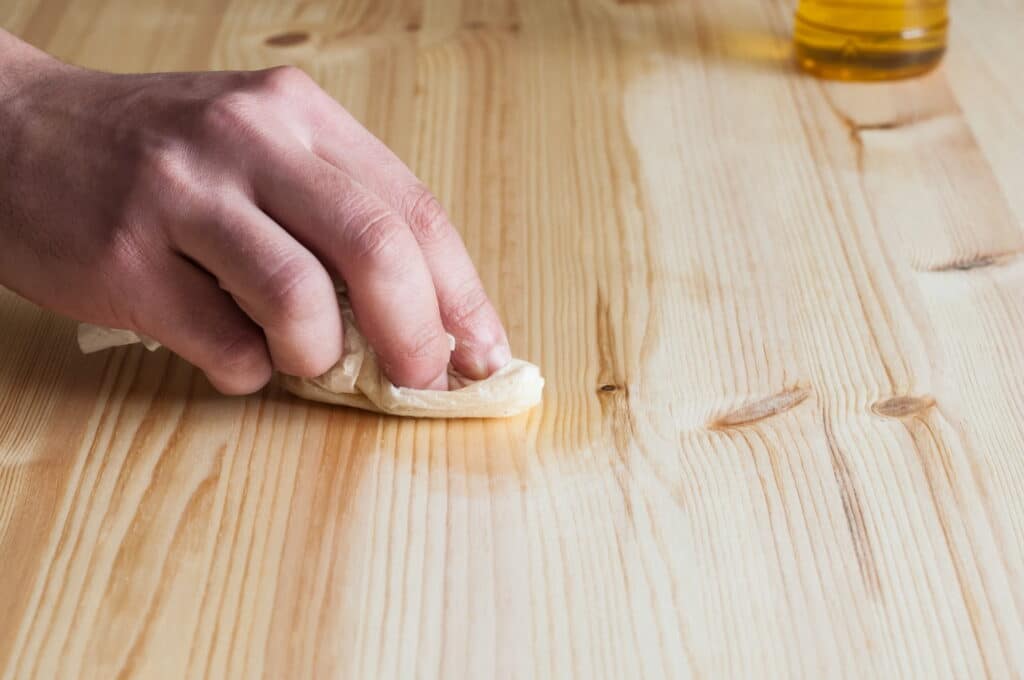
What Is The Safest Way To Remove Wax?
The safest way to remove wax buildup from your ears is to visit a doctor. At your appointment, your doctor can use special instruments, like a cerumen spoon, forceps, or suction device, to clear the blockage. Many offices also offer professional irrigation.
The safest way to remove wax involves using gentle and non-abrasive methods to avoid causing damage to the surface while effectively getting rid of the wax buildup. Whether dealing with wax on floors, furniture, or other objects, the following step-by-step process ensures a safe and successful wax removal.
Softening the Wax: Begin by softening the wax to make it easier to remove. Use a heat source such as a hairdryer, a heat gun, or an iron set to a low temperature. Keep the heat source moving and a safe distance from the surface to prevent overheating or scorching.
Blotting with Paper Towels or Cloth: While the wax is soft, gently blot it with paper towels or clean white cloths. Press the cloth onto the wax, allowing it to absorb the melted wax. Repeat this process with fresh paper towels or cloth until no more wax transfers.
Using a Plastic Scraper: After absorbing as much wax as possible, use a plastic scraper to gently lift off any remaining residue. Be cautious not to scratch or damage the surface, especially if it is delicate.
Applying a Cleaning Solution: To remove any leftover wax residue and to clean the surface thoroughly, use a mild cleaning solution that is appropriate for the material. Avoid using harsh chemicals that can damage the surface or harm the environment.
Mopping or Wiping the Surface: Apply the cleaning solution to the surface and use a soft mop or a clean cloth to wipe away the remaining wax and dirt. Rinse the mop or cloth frequently to avoid spreading wax or grime around.
Rinsing and Drying: After mopping or wiping, rinse the surface with clean water to remove any traces of the cleaning solution. Dry the surface thoroughly with a dry cloth or allow it to air dry completely.
By employing this gentle and careful approach to wax removal, you can ensure the safety of the surface while effectively eliminating the wax buildup. Avoid using sharp or abrasive tools, strong chemicals, or excessive force, as these can lead to damage or discoloration of the material. Always perform a patch test in an inconspicuous area before attempting to remove wax from the entire surface, and when in doubt, consult a professional for advice on the safest removal method.
What should I do if the wax has penetrated the wood grain?
If wax has penetrated the wood grain, it can be more challenging to remove than surface-level wax buildup. In such cases, you’ll need to take extra care to avoid damaging the wood while attempting to remove the wax. Here are some steps you can take if the wax has penetrated the wood grain:
Assess the Severity: Before attempting any removal method, assess the severity of the wax penetration. If the wax has deeply soaked into the wood and removal seems too risky, it might be best to seek professional assistance to prevent further damage.
Heat and Absorb: Apply a gentle heat source, such as a hairdryer or heat gun on a low setting, to soften the wax. While the wax is warm, try blotting it with paper towels or clean cloths to absorb as much as possible. Be patient during this process as deeply penetrated wax may take time to soften.
Use a Commercial Wax Remover: Consider using a specialized commercial wax remover designed for wood surfaces. These products are formulated to dissolve wax and may be more effective in penetrating the wax-impregnated wood grain.
Solvent Test: Before using any commercial wax remover, perform a small test in an inconspicuous area to ensure it won’t harm the wood finish. Some wood finishes are sensitive to certain solvents, and it’s essential to avoid causing additional damage.
Gentle Scrubbing: For stubborn wax residue that remains after using a commercial wax remover, you can try gently scrubbing the area with a soft brush or a soft cloth dampened with the remover. Avoid using abrasive materials or aggressive scrubbing, as they can harm the wood.
Re-staining or Refinishing: In extreme cases where the wax has deeply penetrated the wood and cannot be entirely removed, you may need to consider re-staining or refinishing the affected area. Sanding the wood and applying a new finish can help to blend the stained portion with the rest of the wood surface.
Prevention: To avoid future wax penetration, use protective barriers such as furniture pads, coasters, or placemats to prevent wax spills or leaks from coming into direct contact with the wood.
Removing deeply penetrated wax from wood grain requires patience, caution, and gentle methods. If you’re uncertain about the best approach or concerned about potential damage, it’s always wise to consult a professional woodworker or furniture restorer for expert advice and assistance.
Should I reapply wax to the wood floor after removing it?
After removing wax from a wood floor, the decision to reapply wax depends on several factors, including the type of wood floor, its condition, and personal preferences. Reapplying wax can offer certain benefits, but it may not always be necessary or recommended.
Enhanced Shine and Protection: Wax can add a beautiful shine to the wood floor, enhancing its natural beauty and providing a layer of protection against minor scratches and wear. If your wood floor is old, worn, or lacks luster, reapplying wax can revitalize its appearance and improve its overall resilience.
Restoration of Wax Finish: If the previous wax layer was a part of the floor’s finish, reapplying wax can help restore the original look and maintain a consistent finish across the entire floor.
Sealing and Waterproofing: Wax can act as a sealant, filling in small gaps and cracks on the wood surface, making it more water-resistant. This can be especially beneficial in areas prone to spills or high humidity.
Regular Maintenance: For certain types of wood floors that are traditionally waxed as part of regular maintenance, reapplying wax is essential for ensuring the floor’s longevity and preserving its appearance.
How did wax get on my wood floor in the first place?
The presence of wax on a wood floor can be attributed to various factors, ranging from intentional waxing for maintenance to accidental spills of wax-based products. Understanding how wax ends up on your wood floor can help you take preventive measures and adopt suitable cleaning practices.
Wax-Based Cleaning Products: One common reason for wax on wood floors is the use of wax-based cleaning products. Some commercial floor cleaners or polishes contain waxes that are meant to add shine and protection to the wood surface. Over time, regular use of such products can lead to a buildup of wax on the floor.
Floor Maintenance: Homeowners may intentionally apply wax to their wood floors as part of maintenance. Waxing is often done to restore the floor’s shine, fill in minor scratches, and provide a protective layer. However, if not done correctly or excessively, waxing can lead to buildup and make the floor look dull and discolored.
Accidental Spills: Accidents happen, and if a wax-based product spills or drips onto the wood floor, it can quickly adhere to the surface. These spills may occur during activities such as candle-making, applying wax to furniture, or using wax for crafts.
Transfer from Furniture or Shoes: Wax can also find its way onto the wood floor through indirect means. For instance, if furniture with waxed surfaces is moved across the floor, some of the wax may transfer onto the wood. Similarly, shoes or other objects with wax residues may leave traces on the floor over time.
Wax from Other Surfaces: In multi-level homes or rooms with different flooring types, wax from carpets or rugs with waxed backings can transfer onto the wood floor. This is especially common if the waxed backing becomes damaged or starts to disintegrate.
To prevent wax buildup on wood floors, it’s crucial to use wax-free cleaning products specifically designed for wood surfaces. Regular cleaning with a soft, damp mop and avoiding the excessive use of wax during maintenance can help maintain the natural beauty and longevity of your wood floor. Additionally, promptly cleaning up any wax spills and using protective barriers under furniture or objects with waxed surfaces can further reduce the chances of wax ending up on your wood floor.
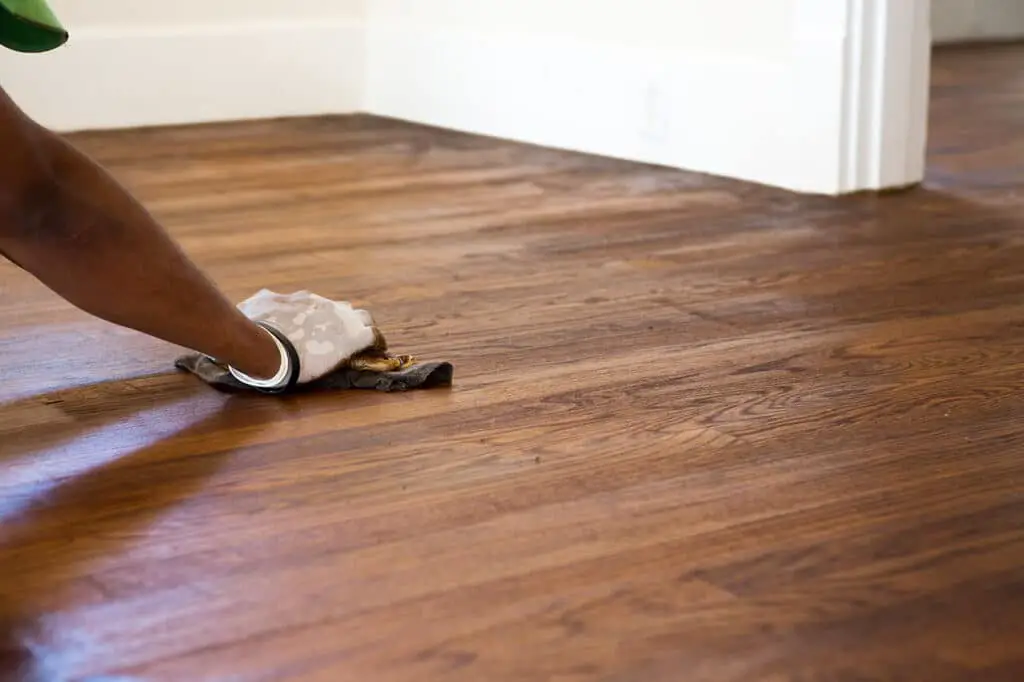
Conclusion
Removing wax from a wood floor requires a delicate balance between effective wax removal and preserving the integrity of the wood’s surface. The step-by-step methods outlined in this guide provide a comprehensive and reliable approach to safely and efficiently tackle wax buildup on wood floors.
The key to successful wax removal lies in the use of heat to soften the wax, followed by gentle blotting and absorption with paper towels or clean cloths. Avoiding sharp or abrasive tools during the process is crucial to prevent scratching or damaging the wood surface. Additionally, using the right cleaning solution appropriate for the wood type further ensures a thorough and successful cleaning outcome.
While various DIY methods might be tempting, specialized wood wax removers and commercial products designed for this purpose are the safest and most effective choices. They are formulated to dissolve wax without harming the wood finish, making them a reliable option for both regular maintenance and tackling stubborn wax buildup.
Furthermore, in cases where the wax has deeply penetrated the wood grain, extra caution is essential. Professional assistance or the use of specialized wood restorers might be necessary to avoid causing further damage.



